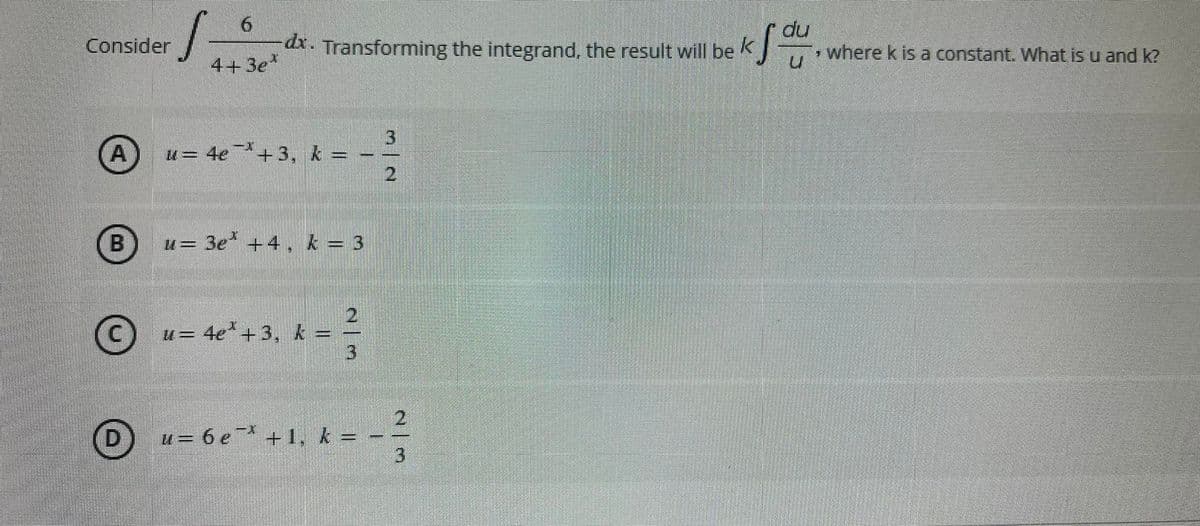6 du Consider dx. Transforming the integrand, the result will be where k is a constant. What is u and k? 4+3e* 3 *+ 3, k = - u= 4e X u= 3e +4, k = 3 u= 4e"+3, k = u= 6 e* +1, k = - 3.
6 du Consider dx. Transforming the integrand, the result will be where k is a constant. What is u and k? 4+3e* 3 *+ 3, k = - u= 4e X u= 3e +4, k = 3 u= 4e"+3, k = u= 6 e* +1, k = - 3.
Algebra & Trigonometry with Analytic Geometry
13th Edition
ISBN:9781133382119
Author:Swokowski
Publisher:Swokowski
Chapter6: The Trigonometric Functions
Section6.4: Values Of The Trigonometric Functions
Problem 23E
Related questions
Question

Transcribed Image Text:9.
du
, where k is a constant. What is u and k?
Consider
dx. Transforming the integrand, the result will be K
4+3e
A
u = 4e+3, k =
u= 3e* +4, k = 3
2.
u= 4e+3, k =
3.
D
u= 6 e + 1, k =
23
Expert Solution
This question has been solved!
Explore an expertly crafted, step-by-step solution for a thorough understanding of key concepts.
Step by step
Solved in 2 steps with 2 images

Recommended textbooks for you

Algebra & Trigonometry with Analytic Geometry
Algebra
ISBN:
9781133382119
Author:
Swokowski
Publisher:
Cengage

Algebra & Trigonometry with Analytic Geometry
Algebra
ISBN:
9781133382119
Author:
Swokowski
Publisher:
Cengage